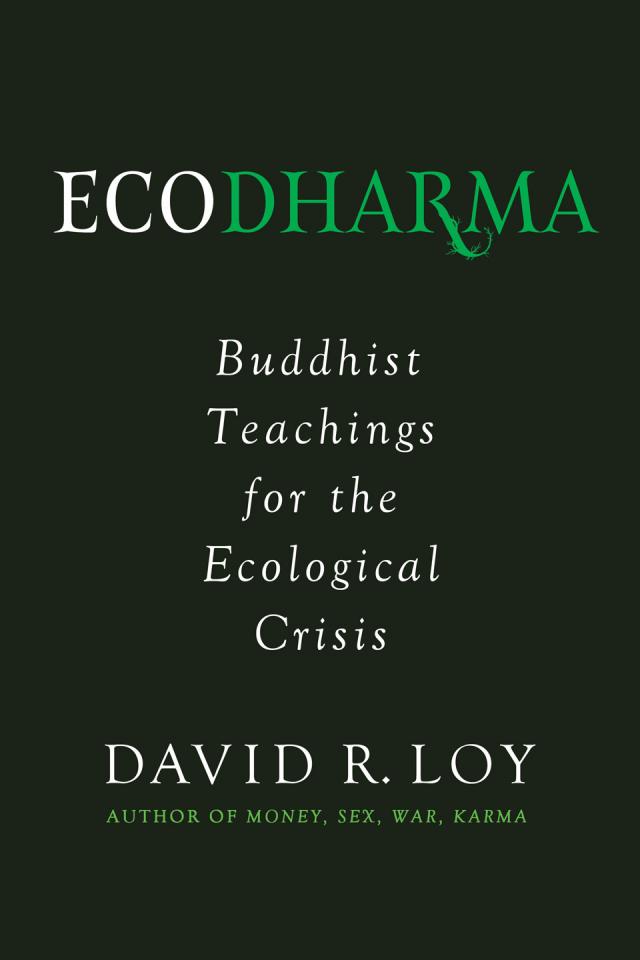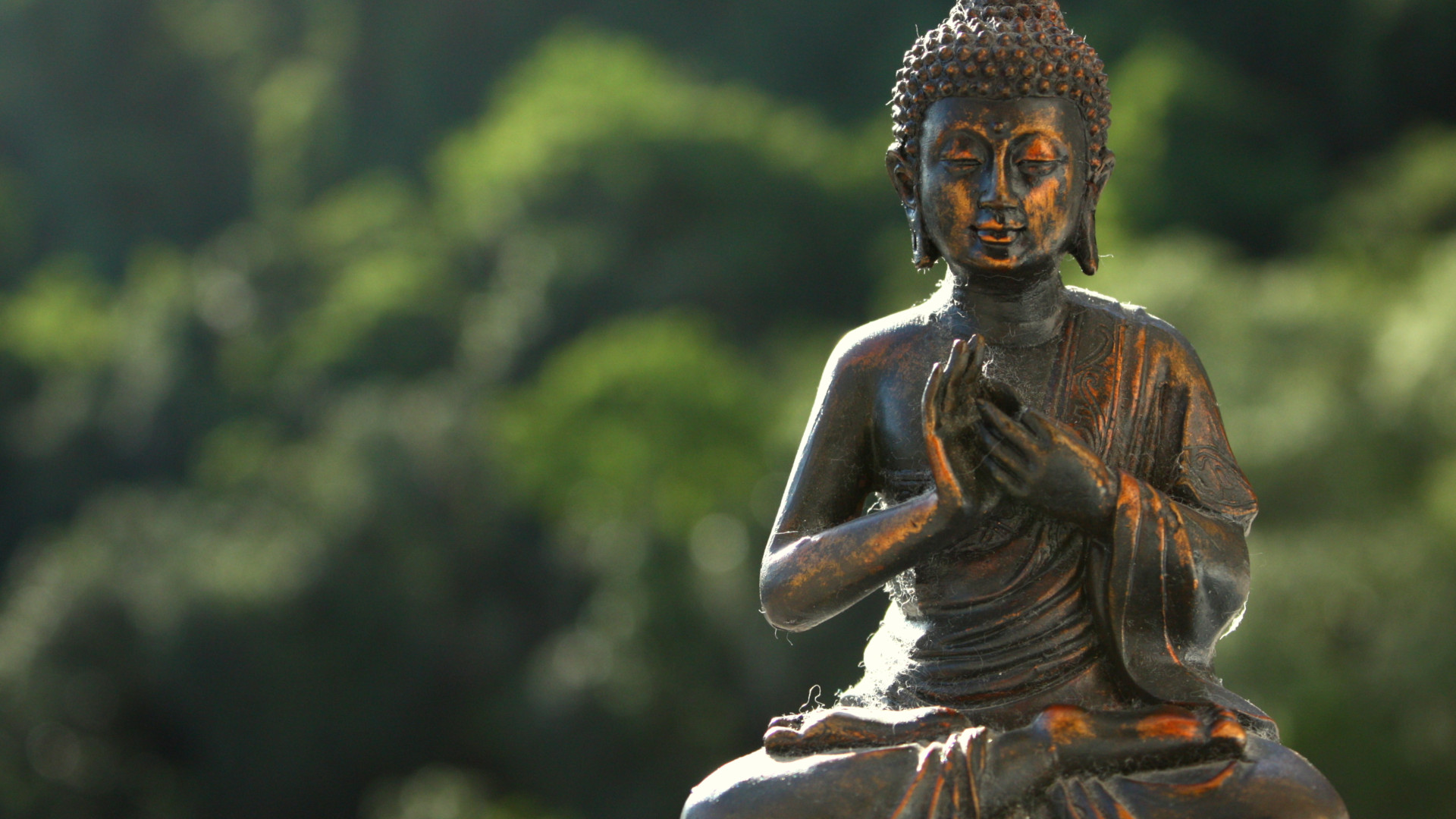Does saving the planet from its current ecological crisis fall within the basic tenets and callings of Buddhism? Author David R. Loy argues that it does.
Loy should know. The noted scholar and Zen teacher co-authored the groundbreaking “Buddhist Declaration on Climate Change” 10 years ago, which has since been signed by the Dalai Lama, Buddhist leader Thich Nhat Hanh and thousands of others. The declaration was revised and presented at the Paris climate treaty in 2015, where it called for people to accept their “individual and collective responsibility to do whatever we can” to meet targets to lower carbon emissions and save the planet from global warming.
 Now Loy is back to talk about how to achieve that goal. His thought-provoking new book, Ecodharma: Buddhist Teachings for the Ecological Crisis, starts off by presenting readers with the basic facts about climate change and the other ecological and social problems plaguing the planet. This should serve as a thorough (and thoroughly terrifying) primer for any readers who aren’t fully aware of the issues.
Now Loy is back to talk about how to achieve that goal. His thought-provoking new book, Ecodharma: Buddhist Teachings for the Ecological Crisis, starts off by presenting readers with the basic facts about climate change and the other ecological and social problems plaguing the planet. This should serve as a thorough (and thoroughly terrifying) primer for any readers who aren’t fully aware of the issues.
Loy then asks if the eco-crisis “is also a Buddhist crisis” and discusses how Buddhism may need to evolve to address the current ecological problems affecting the Earth and all who live here.
In particular Loy levies criticism at western Buddhism, where “serious money is available for some high-profile meditation centers… but apparently not for organizations that seek to promote the social and ecological implications of Buddhist teachings.” He also notes that these meditation centers tend to hold their sessions indoors, cut off from the nature and trees that the Buddha celebrated in his teachings.
So what are those Buddhist teachings, and how specifically do they fail the modern world? As Loy points out, one of the most important goals of Buddhism is the alleviation of suffering, which helps lead to enlightenment. But Loy argues that all too often the practice of alleviating suffering only addresses individual need and leaves out broader, societal issues.
“When we encounter a homeless person who is suffering, for example, we should respond compassionately,” Loy writes. “But how do we respond compassionately to a social system that is creating more homeless people? Analyzing institutions and evaluating policies involves conceptualizing in ways that traditional Buddhist practices do not encourage.” In fact many Buddhist groups actively discourage social engagement in broad-scale issues. There are thousands of Buddhist organizations in the United States, but only a handful related to environmental issues.
This, he writes, is Buddhism’s “greatest challenge ever.” None of the worldwide forms of Buddhism that have developed over the past 2,400 years ever had to deal with “an ecological catastrophe that threatened civilizational collapse and perhaps even human extinction,” so they’re not currently equipped to handle these very modern problems.
Or are they? They may not have the organizational structure and drive yet, but Loy points out that “Buddhist teachings do not tell us what to do in response to the ecological crisis, but they have a lot to say about how to do it.”
Loy devotes the most important chapter of this book to this question of “how,” focusing on Buddhist concepts such as interdependence, nonduality, the “three poisons” (greed, ill will and delusion) and the five precepts. These, he says, provide the core set of values for taking on climate change and other issues. If you believe that you should cause no harm to other beings — one interpretation of the first of the five precepts — then addressing the ecological crisis must also be part of your value system.
From a Buddhist perspective, he argues, the problem is not individuals actively evilly “but institutionalized structures of collective greed, aggression and delusion that need to be transformed.”
You’ve probably heard similar statements from environmental and social-justice groups.
As it turns out, Buddhism and the environmental movement have a lot more in common. One of the book’s appendices reprints Buddhist monk Bhikkhu Bodhi’s “Simple and Practical Steps Toward Mitigating Climate Change” (also available here), which calls for actions that “abstain from all evil” such as rejecting the Keystone XL pipeline and imposing a carbon tax. It also suggests taking paths that cultivate good, such as shifting to plant-based diets and promoting the mass production of electric and hybrid vehicles.
Bodhi ends his treatise by encouraging people to “take direct action to block climate-destroying projects, such as oil rigs, pipelines, fracking sites, etc.”
Meanwhile, Loy writes, the two groups may have something to learn from each other. Environmentalists can teach Buddhists how to be more socially engaged, while Buddhism can offer activists the tools they need to avoid “fatigue, anger, depression and burnout.” (Sign me up.)
Your mileage on Ecodharma may very well depend on how engaged you are with the principles of Buddhism, and many readers may need to meditate on Loy’s recommendations. Science-minded folks might take exception to Loy calling climate change “a spiritual crisis,” while non-Buddhists may not understand his lessons about taking the bodhisattva path, and Buddhists might feel uncomfortable with the ideas and challenges he’s presenting. Yet the book may also present an opportunity and framework for Buddhist groups and like-minded individuals to take up the mantle of social engagement and seek enlightenment for the entire planet — before it’s too late.
![]()


